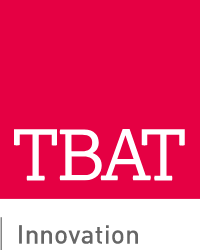


Chris Stuttle
Senior Consultant
Recent updates to CIRD90500, the HMRC guidance governing SME R&D tax relief and payable tax credits for surrenderable losses, are important for any business claiming R&D incentives. While the fundamental rules remain, key changes affect how surrenderable losses and payable credits are calculated.
This article concerns claims starting before 01/04/2024, i.e. those that are not utilising the new RDEC or ERIS schemes. Rather, this concerns claims with a start date before this date, where the SME and RDEC schemes were accessible.
CIRD90500 explains the mechanism that allows an SME to “surrender” part of its trading loss in return for a cash credit. This has long been an important source of support for early-stage and scaling companies investing heavily in innovation.
What remains unchanged:
The core framework is still familiar. Where things differ is in how the surrenderable loss is calculated and the size of the credit available.
Under the pre-2023 SME R&D scheme, the amount a business could surrender as a loss was based on the lower of:
The unrelieved trading loss, and a percentage of qualifying R&D expenditure – These percentages shifted over the years:
The payable credit itself was also generous over this period, varying and peaking at 14.5% of the surrenderable loss.
For accounting periods crossing rate-change boundaries, the old rules required splitting expenditure across time bands and applying different enhancement and surrender rates.
The updated CIRD90500 reflects a very different landscape. HMRC has trimmed the SME scheme to encourage more UK-focused innovation and reduce the size of large, cash-heavy claims.
Here are the big changes:
A lower enhancement rate
The uplift on qualifying R&D expenditure is now much smaller. Surrenderable loss is based on:
That’s a big drop from the historic 230%.
A lower payable credit rate
The cash credit you receive is now 10%, not 14.5%.
A new PAYE/NIC-based cap
This cap limits the cash credit to the lower of:
This ties the benefit more closely to UK payroll, reinforcing HMRC’s push for domestic R&D employment.
Handling periods that straddle April 2023
This is where both versions of CIRD90500 put in the heavy lifting.
If your accounting period crosses 1 April 2023, you can’t simply apply one rate. You must:
It’s fiddly, but necessary. The updated guidance includes a full example that walks through the mechanics of turning a taxable profit into a loss, then dividing and calculating the payable credits separately. It’s worth reading if your business (or your clients) cross that April boundary.
Despite the revised rates, several core principles remain consistent:
So, although the calculations look different, the logic behind them hasn’t shifted dramatically.
For loss-making companies, the updated CIRD90500 means:
On the upside, businesses with strong UK-based teams may still access meaningful credits, though not at the historic levels.
The updated CIRD90500 reflects a major pivot in UK R&D tax policy. The government has clearly shifted the SME scheme away from high cash subsidies and toward a model that rewards UK-based technical employment.
If you’re claiming R&D tax credits, especially payable credits as a loss-making SME, you now need to:
These changes don’t eliminate R&D support for SMEs, but they do make the landscape more complex and less generous than before.
For full details of the CIRD90500 guidance, visit: CIRD90500 – R&D tax relief: SME scheme: payable tax credit – for surrenderable loss – HMRC internal manual – GOV.UK
If you would like any support with understanding any of the information provided within the CIRD manuals, please get in touch with our expert R&D tax team.